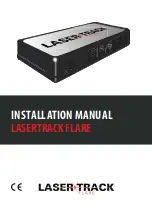
tire pressure will also increase as the vehicle is driven - this
is normal and there should be no adjustment for this
increased pressure.
The TPMS will warn the driver of a low tire pressure if the
tire pressure falls below the low-pressure warning limit for
any reason, including low temperature effects and natural
pressure loss through the tire.
The TPMS will continue to warn the driver of low tire
pressure as long as the condition exists, and will not turn
off until the tire pressure is at or above the recommended
cold placard pressure. Once the low tire pressure warning
(Tire Pressure Monitoring [TPM] Telltale Light) illumi-
nates, you must increase the tire pressure to the recom-
mended cold placard pressure in order for the TPM Telltale
Light to turn off. The system will automatically update and
the TPM Telltale Light will turn off once the system
receives the updated tire pressures. The vehicle may need
to be driven for up to 20 minutes above 15 mph (24 km/h)
in order for the TPMS to receive this information.
NOTE:
When filling warm tires, the tire pressure may need
to be increased up to an additional 4 psi (30 kPa) above the
recommended cold placard pressure in order to turn the
Tire Pressure Monitoring Telltale Light off.
For example, your vehicle may have a recommended cold
(parked for more than three hours) placard pressure of 30
psi (207 kPa). If the ambient temperature is 68°F (20°C) and
the measured tire pressure is 27 psi (186 kPa), a tempera-
ture drop to 20°F (-7°C) will decrease the tire pressure to
approximately 23 psi (158 kPa). This tire pressure is suffi-
ciently low enough to turn on the TPM Telltale Light.
Driving the vehicle may cause the tire pressure to rise to
approximately 27 psi (186 kPa), but the TPM Telltale Light
will still be on. In this situation, the TPM Telltale Light will
turn off only after the tires are inflated to the vehicle’s
recommended cold placard pressure value.
CAUTION!
•
The TPMS has been optimized for the original
equipment tires and wheels. TPMS pressures and
warning have been established for the tire size
equipped on your vehicle. Undesirable system op-
eration or sensor damage may result when using
replacement equipment that is not of the same size,
type, and/or style. Aftermarket wheels can cause
sensor damage.
(Continued)
5
SAFETY
173
Содержание Chassis CAB 2018
Страница 4: ......
Страница 10: ......
Страница 11: ...GRAPHICAL TABLE OF CONTENTS CONTENTS FRONT VIEW 10 REAR VIEW 11 INSTRUMENT PANEL 12 INTERIOR 13 2...
Страница 13: ...REAR VIEW Rear View 1 Rear Lights 2 GRAPHICAL TABLE OF CONTENTS 11...
Страница 16: ......
Страница 88: ...Uconnect 4C 4C NAV With Automatic Temperature Controls 86 GETTING TO KNOW YOUR VEHICLE...
Страница 97: ...Operating Tips Chart 3 GETTING TO KNOW YOUR VEHICLE 95...
Страница 275: ...Fast Tone Continuous Tone 6 STARTING AND OPERATING 273...
Страница 356: ......
Страница 374: ...Finger Tabs Finger Tab 372 SERVICING AND MAINTENANCE...
Страница 424: ......
Страница 438: ......
Страница 487: ...Uconnect 3 Uconnect 4C 4C NAV 10 MULTIMEDIA 485...
Страница 491: ...Uconnect 3 0 Uconnect 3 10 MULTIMEDIA 489...
Страница 504: ......
Страница 511: ...INDEX 12...
















































